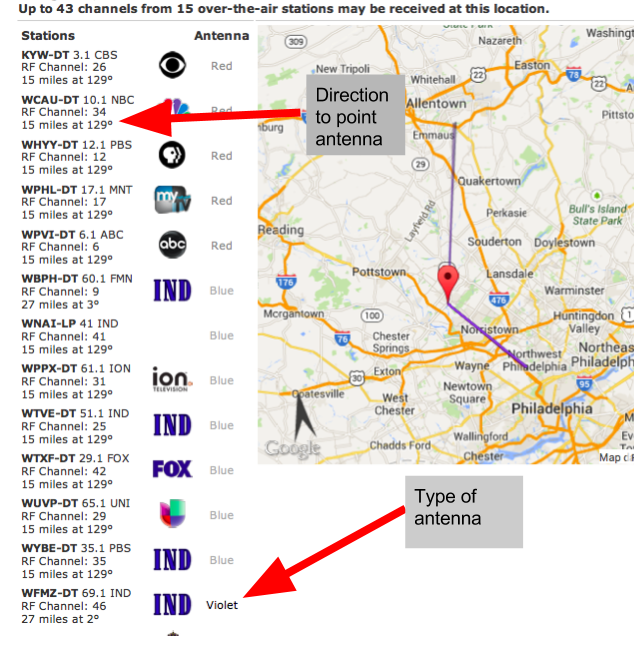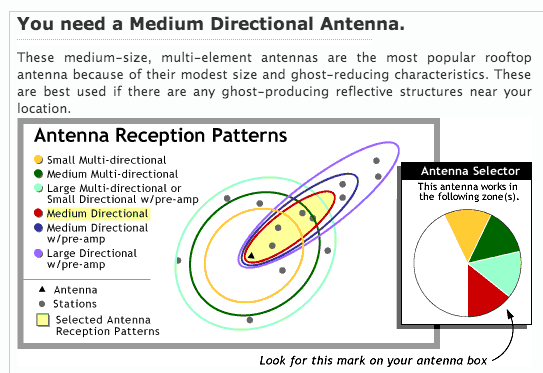6 months of living without cable has prompted us to invest in an over-the-air TV antenna. Living 20 miles outside of Philadelphia may provide the major networks if we can get a signal. Two years ago we tried a $40 Mohu indoor antenna with no success most likely as there is a large hill between our house and the city.
This time we decided to try a more powerful antenna that can receive channels from more than one direction without a rotating motor. The Antennas Direct DB8e Extreme Range Multi-Directional Bowtie UHF Antenna was selected and costs around $140.
Mounting Location
Decided to try to get it working within the house rather than mounted outside. The so called attic placement is easier and safer with some loss of signal. Since we went with a more powerful antenna, the antenna is initially mounted on an old chair.
Alignment
All TV antennas favor one direction. In our case, there are 2 cities within 40 miles that have stations but they are in very different directions. First go to antennaweb.org and enter your address. The site will list which stations you may be able to receive given the strength of your antenna.
To find the direction of the antenna, start with a compass to get the general direction. Place a TV near the antenna and set it to a channel in that direction. Digital TV will either work or not so it may be hard to get the position exactly right. Once satisfied, select auto-program on the TV and see what you get. If the antenna supports it, try adjusting the secondary antenna to another direction and see if you can get more without losing the ones you have.
Signal Distribution
The signal from the antenna won’t travel well through many connections or to multiple TV’s. Ideally, a pre-amplifier is installed near the antenna to gain additional channels and send the signal further into the house. To use the signal on multiple TV’s, a powered signal distribution hub (also powered) may also be used.
DVR
Many people enjoy the time-shifting capabilities of a digital video recorder. Traditional DVR’s like Tivo will work but generally work with one TV and carry a monthly subscription cost for the guide. A new class of DVR/tuners is becoming available that allows both recording and distribution of channels and recordings over wired and wireless networks. The challenges with the new solutions focus on what devices to hook up to your TV and how easy it is for a novice to use. Examples are Simple.TV and Tablo.

